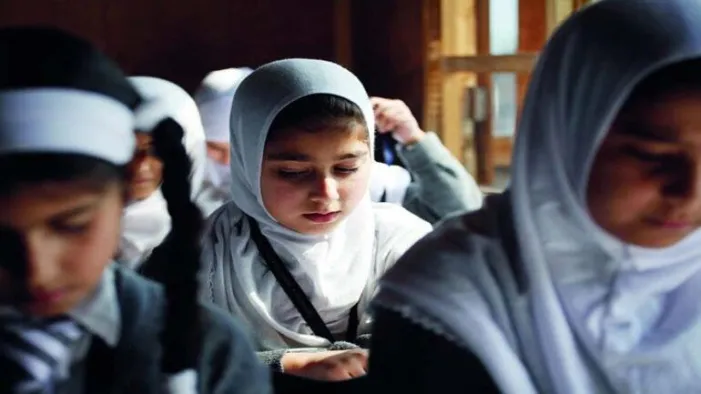Srinagar: Around half of schools in Jammu and Kashmir lack girls’ toilets while 30 percent schools are without driving water facility, according to the Annual Status of Education Report 2018, a nationwide survey compiled by NGO Pratham Education Foundation released on Wednesday.
It said while 72.8 schools have toilets, same for the girl students was 53.1%, meaning thereby that nearly 47% lack it. However, there has been an increase of nearly 5% in availability of the facility from that of 2018.
Regarding drinking water availability, it said, 69.3% schools have facility, an increase by 15% from 2018.
ASER is a nationwide, citizen-led household survey that provides a snapshot of children’s schooling and learning in rural India. The first ASER was conducted in 2005 and repeated annually for 10 years. ASER 2022 is the first field-based “basic” nationwide ASER after a gap of four years. It comes at a time when children are back in school after an extended period of school closure in view of the pandemic.
Meanwhile, the proportion of out-of-school girls in India declined to the lowest ever rate of 2 per cent in 2022.
The report also noted that despite the overall decline, three states — Madhya Pradesh, Uttar Pradesh and Chhattisgarh — were a cause of concern with over 10 per cent girls out of school.
The overall proportion of out-of-school girls was 4.1 per cent in 2018 and 10.3 per cent in 2006.
“This is even more stark as nationally now lesser number of older girls in the 15 to 16 age group are out of school. Cause of concern, however, are the three states, Madhya Pradesh, Uttar Pradesh and Chhattisgarh, which continue to have more than 10 per cent of these older age group girls out of schools,” the report said.
The latest study has surveyed a total of 19,060 villages in rural India which include 3,74,544 households and 6,99,597 children in the age group 3 to 16 years.
In 2006, the all-India figure for the percentage of girls in the age group of 11-14 who were out of school stood at 10.3 per cent, falling over the following decade to 4.1 per cent in 2018.
“This proportion has continued to drop. In 2022, the all-India figure for 11-14 group not enrolled in school stands at 2 per cent. This figure is around 4 per cent in Uttar Pradesh and is lower in all other states. The decrease in the proportion of girls not enrolled in schools is even sharper among older girls in the 15-16 age group,” the report said.
In 2008, nationally, more than 20 per cent of girls in the 15-16 age group were not enrolled in school.
“Ten years later, in 2018, this figure had decreased to 13.5 per cent. The proportion of 15-16-year-old girls not enrolled in schools has continued to drop, standing at 7.9 per cent in 2022. Only three states have more than 10 per cent of girls in this age group out of school: Madhya Pradesh (17 pc), Uttar Pradesh (15 pc), and Chhattisgarh (11.2 pc),” it said.
The report has also pointed out that the school enrolment figures have increased since 2018 despite prolonged closure during the pandemic with a rebound in the enrolment in government schools.
The proportion of not currently enrolled 6 to 14 years age group children is down almost half of what was observed in 2018 and the lowest in the decade since the Right to Education Act came into effect.











